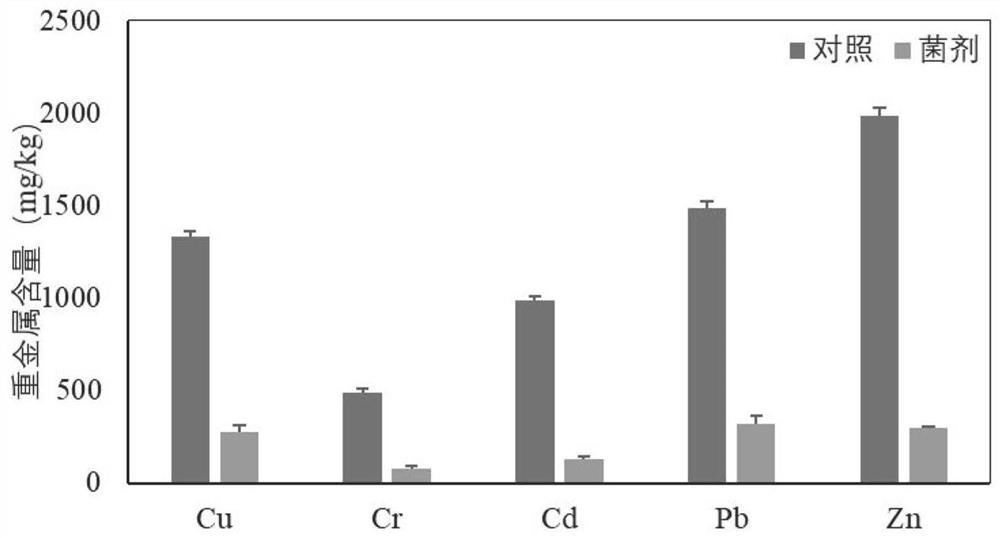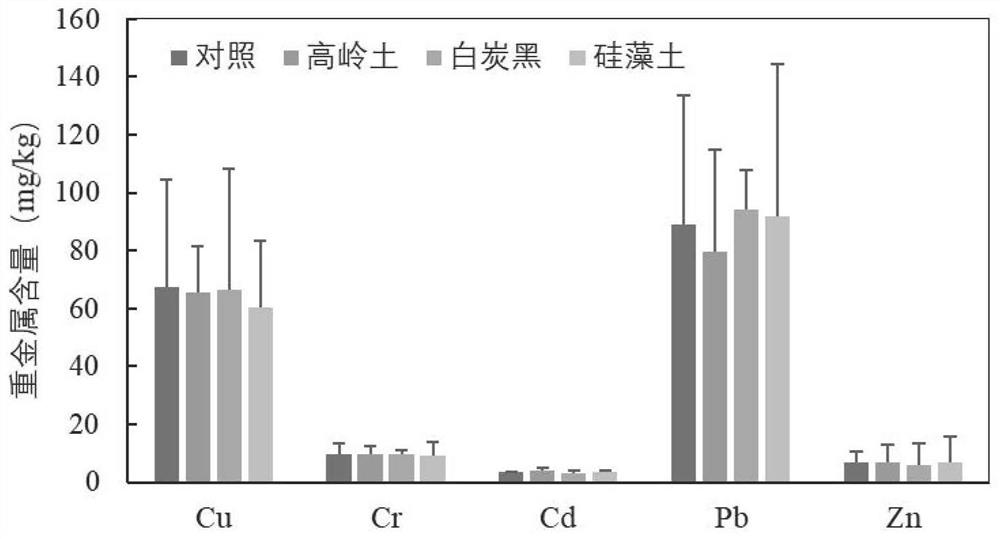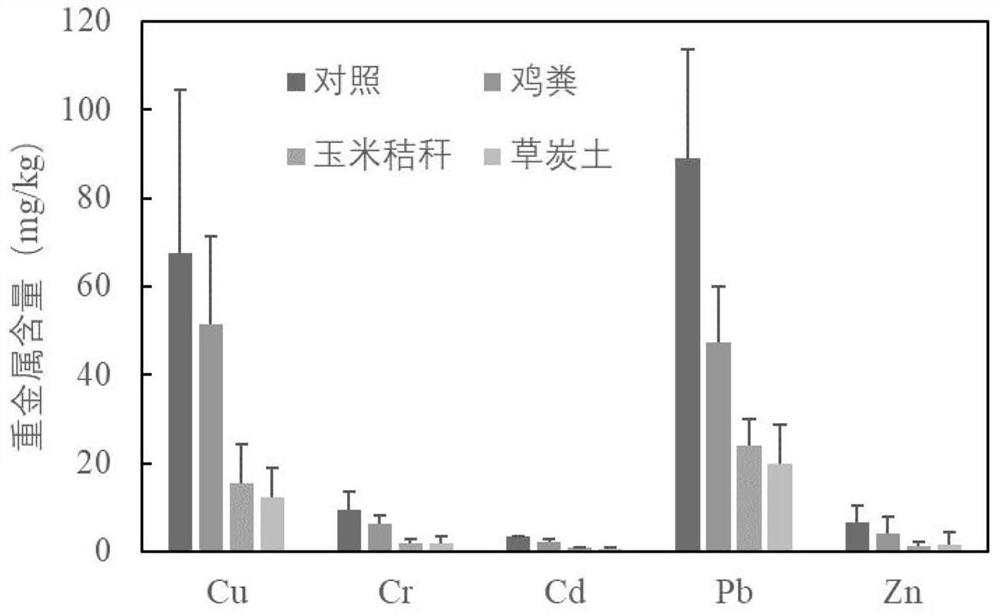Heavy metal tolerant microbial strain and application thereof
A technology of heavy metals and microorganisms, applied in the field of bio-ecological restoration of heavy metal-contaminated soil, can solve the problems of low soil reuse, large engineering workload, and long time, and achieve good ecological restoration effects, low cost, and no secondary pollution Effect
- Summary
- Abstract
- Description
- Claims
- Application Information
AI Technical Summary
Problems solved by technology
Method used
Image
Examples
Embodiment 1
[0020] Preparation of soil bacterial suspension and isolation of strains: pass the sample soil sample through a 100-mesh sieve, remove large pieces of sand, weigh 10g of soil sample, add 90mL of sterile water, shake the table for about 30min, and make the microorganisms in the soil and water The sample was mixed evenly, and the concentration of the prepared soil suspension was 0.1g / L. The soil suspension was taken in the ultra-clean workbench for concentration gradient dilution, and 1 mL of the 0.1 g / L soil suspension was drawn with a sterilized pipette tip, and added to 9 mL of in sterile water, so dilute 10 -6 .
[0021] Gradient plate configuration of heavy metal copper: Prepare 200mL LB solid medium, and then add appropriate amount of heavy metals to the prepared 100mL liquid medium, then add 1.2g agar, sterilize at 121°C for 20min. After the sterilization is completed, generally raise one side of the petri dish by about 5mm, pour about 10mL of melted medium without metal...
Embodiment 2
[0027] Effects of different formulations on the remediation effect of Pseudomonas formosana on soil heavy metals
[0028] Pseudomonas taiwanensis (Pseudomonas taiwanensis) LQCu domesticated to efficiently precipitate and solidify heavy metals was propagated in an activated medium, and kaolin, white carbon black and diatomaceous earth were used to make wettable powder (Pseudomonas taiwanensis) respectively. Quantity is 1012 / g), wettable powder sprays 1kg per mu, the result is as follows figure 2 As shown, the heavy metal concentrations of Cu, Cr, Cd, Pb and Zn water leached in soil decreased by about 10%.
[0029] Chicken manure, corn stalks and peat soil were used to prepare organic bacteria (the number of Pseudomonas taiwanensis was 1011 / g), and the application rate of organic bacteria was 5 kg per mu. The result is as image 3 As shown, after the application of the organic bacterial agent with chicken manure as the carrier, the concentration of heavy metals leached from C...
Embodiment 3
[0031] Effects of straw type and size on soil heavy metal remediation by Pseudomonas formosanum
[0032] The commonly used local straw, corn, sorghum and wheat straw were used as carriers, and the straws were crushed into lengths of 2, 5, 8 and 10 mm as carriers. The dosage is still 5kg. The result is as Figure 4 As shown, it is found that the type of straw will not affect the repair effect of the bacterial agent, and the length of the straw will affect the precipitation effect of the bacterial agent on heavy metals. Among them, the 2mm and 5mm bacterial agents are prepared, and Cu, Cr, Cd, Pb and Zn in the soil are leached by water. The concentration of heavy metals can be reduced by 75%, and the concentration of heavy metals leached from Cu, Cr, Cd, Pb and Zn in 8mm and 10mm inoculum soil can be reduced by about 63%.
PUM
 Login to View More
Login to View More Abstract
Description
Claims
Application Information
 Login to View More
Login to View More - R&D
- Intellectual Property
- Life Sciences
- Materials
- Tech Scout
- Unparalleled Data Quality
- Higher Quality Content
- 60% Fewer Hallucinations
Browse by: Latest US Patents, China's latest patents, Technical Efficacy Thesaurus, Application Domain, Technology Topic, Popular Technical Reports.
© 2025 PatSnap. All rights reserved.Legal|Privacy policy|Modern Slavery Act Transparency Statement|Sitemap|About US| Contact US: help@patsnap.com



